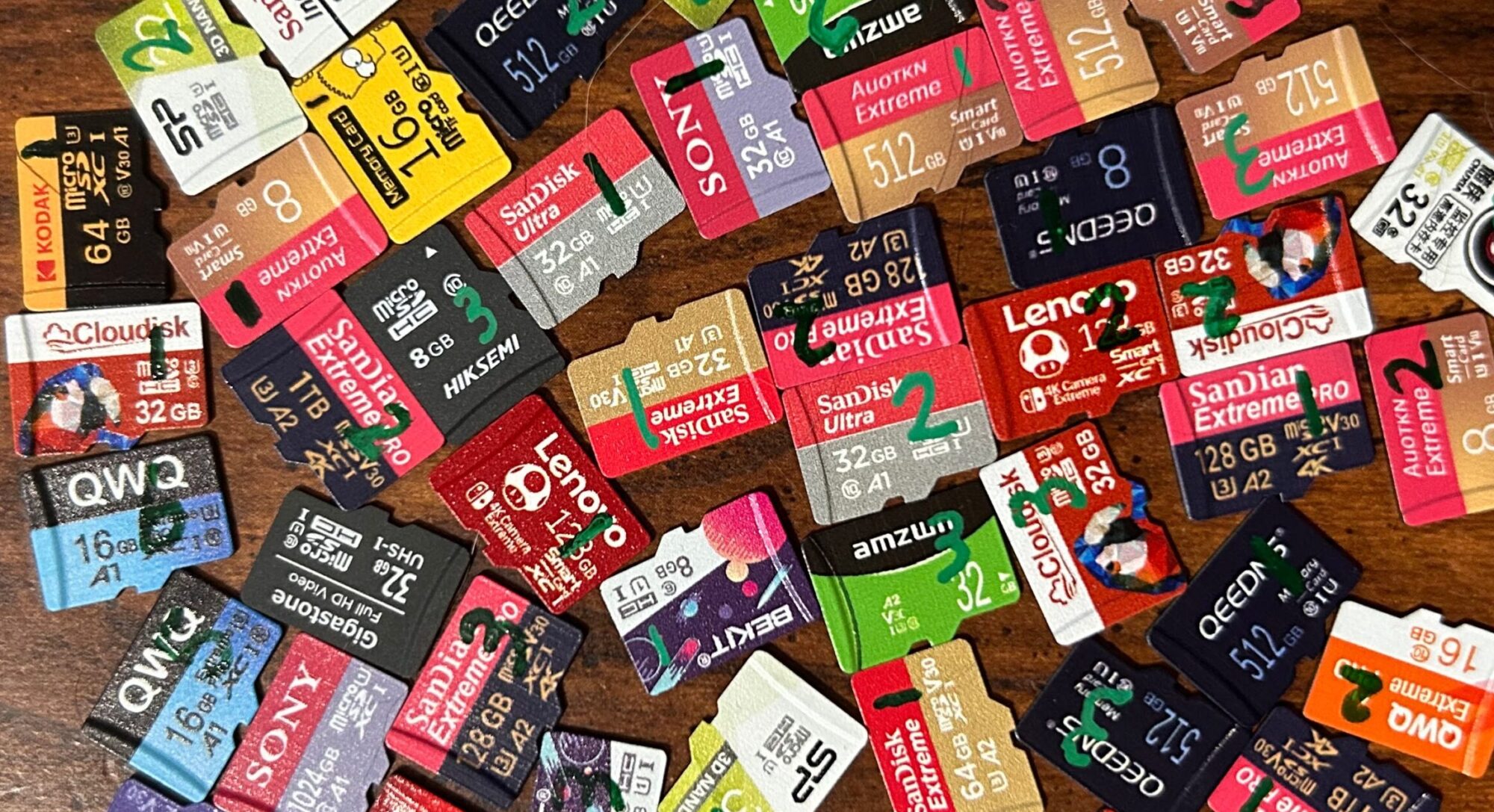This is a model I found while browsing randomly through AliExpress, and one I heavily suspected would be fake flash when I ordered it. I was curious to see whether lower and higher capacity models would both be fake flash, or if these sellers would limit their fake flash to just higher capacity models — so at first, I bought a single 128GB card (which was the lowest capacity they offered) and a single 2TB card. Later, after I made the decision to test at least three samples of each brand/model/capacity, I went back and ordered two more. Unfortunately, the seller sent me 256GB cards, so I had to order another two from a different seller. Spoiler: they’re all fake flash.
Disclaimer: I don’t think Lenovo had anything to do with this card. I think this is an unlicensed knock-off (hence why “Lenovo” is in quotes).
This card bears a number of hallmarks of fake flash: they bear the name of a well-known electronics manufacturer, even though that manufacturer is not known for selling flash memory (in this case it’s Lenovo, but I’ve seen Sony and Xiaomi caught up in the crossfire here as well); the manufacturer ID and OEM ID have been zeroed out from the CID register in an attempt to mask their true origin; and performance across the board was pretty abysmal. This particular seller also attempted to be sneaky by not including any of the standard speed class marks. Instead, they opted to include the Nintendo Switch icon — which, last I checked, wasn’t an indicator of speed. (They did include the UHS-I mark, but this mark by itself also doesn’t make any assertions as to the card’s read or write speeds.)
As far as my criteria for determining name-brand/knockoffs goes, they pretty obviously fail the name brand test for a few reasons:
- They come in a retail package, but the packaging doesn’t identify who is selling the card.
- The card is fake flash.
- One of these cards showed evidence that the vendor was trying to conceal the card’s true origin — specifically, the manufacturer ID was set to hex
00, and the OEM ID was set to hex0000. The other two cards had their manufacturer ID set to hex05, and their OEM ID set to hex000c— which I haven’t seen anywhere except for the other fake “Lenovo” cards.
They do, however, meet the criteria that I set out for knockoffs: it bears a well-known brand name (Lenovo), it’s fake flash, and there’s no evidence to suggest that it was sanctioned by Lenovo. So, into the knockoff bucket you go!
On the endurance testing front:
- Sample #1 chugged along on its endurance test for quite some time; however, it only managed to go 327 read/write cycles before starting to display data mismatch errors. At first, the errors only affected two sectors; however, the number of sectors increased nearly every round after that. By the time it finished round 2,611, more than 50% of the device’s sectors had been flagged as bad.
Sample #2’s first error was a bit flip error that affected two sectors during round 999. The number of bad sectors continued to increase over successive rounds, but stayed under 1% — that is, up until round 2,083, when every sector read back as all
0xff‘s. Here’s the graph of this card’s progression:- Sample #3’s first error was a bit flip error that affected two sectors during round 1,632. It managed to go about another 730 read/write cycles before the number of affected sectors passed the 0.1% mark. But then, during round 2,534, all sectors started reading as
0xff‘s.
My recommendation? They’re fake flash, they scored below average in just about every metric, and not a single one of them made it to the 2,000 read/write cycle mark without major issues. They’re trash — don’t buy them.
September 18, 2025

